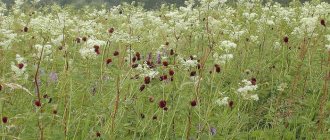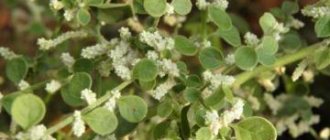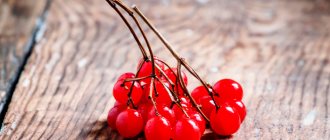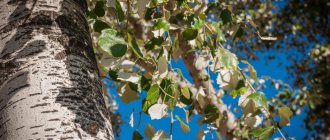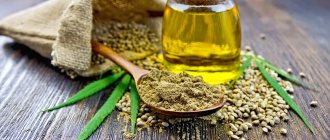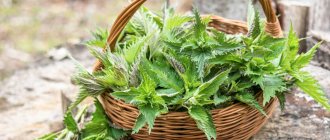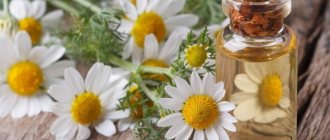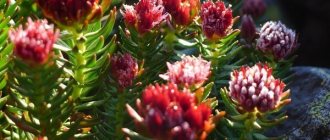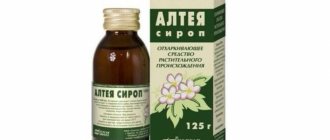Description
Artichoke (flower vegetable) is a perennial plant with green or grayish-green large lobed leaves, with spear-shaped, wide-toothed segments with short spines pubescent from below, collected in a basal rosette. The stem of the herbaceous specimen is straight and reaches 50–180 centimeters in height. The root is a long taproot that overwinters. Artichoke inflorescences are ten-centimeter baskets in diameter, covered with scaly wrappers. The seeds are obovate, thickish. Tubular flowers (blue, purple, white) are located on massive receptacles. The fruits are large, quadrangular, with a cut off top or flattened, bare achenes with a tuft.
In appearance, the artichoke resembles a round, immature cone the size of a large orange to a small nut.
How does it grow?
To successfully grow a crop, the area for the plant is protected from winds, it must be well lit, with fertile soil rich in organic matter. Artichoke loves abundant watering and warmth; when the ambient temperature drops to minus 1 degree Celsius, the flowers are damaged and die. It propagates in two ways: by root layering (planted at a distance of 100 centimeters from each other), and by seeds.
For abundant fruiting and intensive growing season, the plant is fed by spraying the leaves with a mixture of wood ash (10 grams), superphosphate (25 grams), potassium chloride (10 grams). As a rule, the artichoke bush “gives birth” in the second year.
The ripening of buds occurs unevenly. The first flower stalks appear at the end of summer, and after 14 days they can already be cut. Artichoke fruits are harvested after the upper scales of the cone begin to move apart and bend slightly. The appearance of bluish petals at the top of the bud indicates that the crop is overripe and unsuitable for consumption.
The artichoke must be cut with a stem 5 centimeters long. The shelf life of such fruits depends on the ambient temperature and ranges from 2 weeks to 3 months.
For medicinal purposes, the leaves, inflorescences, and fleshy receptacles of artichoke baskets are harvested and dried during flowering. Young (small or medium-sized) fruits can be eaten whole raw, canned or pickled, and large ones can be consumed only boiled, removing hard hairs and leaf tips.
Chemical composition
Fresh artichokes are a storehouse of nutrients for the human body. The calorie content of a raw vegetable-flower is only 28 kcal per 100 grams of product, boiled - increases to 53 kcal. Therefore, the raw fruits of the plant are widely used in the diet menu for weight loss.
What does an artichoke taste like?
The plant has a pronounced taste of Jerusalem artichoke, wood, and mature walnut.
Table No. 1 “Chemical composition of artichoke”
| Nutrient name | Amount of nutrients in 100 grams of inflorescence, milligrams |
| Vitamins | |
| Ascorbic acid () | 5 |
| Vitamin PP | 0,6 |
| Pyridoxine () | 0,2 |
| Riboflavin () | 0,05 |
| Thiamine () | 0,04 |
| Beta carotene | 0,02 |
| Vitamin A (VE) | 0,02 |
| Folic acid () | 0,0185 |
| Macronutrients | |
| Potassium | 238 |
| Chlorine | 47 |
| Phosphorus | 34 |
| Sodium | 20 |
| Sulfur | 15 |
| Calcium | 15 |
| Magnesium | 9 |
| Microelements | |
| Aluminum | 0,815 |
| Iron | 0,4 |
| Zinc | 0,29 |
| Manganese | 0,21 |
| Copper | 0,135 |
| Bor | 0,1 |
| Fluorine | 0,014 |
| Molybdenum | 0,01 |
| Iodine | 0,002 |
| Cobalt | 0,001 |
Table No. 2 “Nutritional value of artichoke”
| Name | Content per 100 grams of product, grams |
| Water | 90 |
| Carbohydrates | 6 |
| Mono- and disaccharides | 5 |
| Squirrels | 1,2 |
| Ash | 1 |
| Alimentary fiber | 0,5 |
| Starch | 0,5 |
| Fats | 0,1 |
| Organic acids | 0,1 |
The outer leaves of the wrapper contain essential oils, which give the artichoke the characteristic taste of an unripe walnut, and the inflorescences contain the polysaccharide inulin, which strengthens the immune system, stimulates the growth of bone tissue, and removes heavy metals and radionuclides from the body. This is a dietary, highly digestible vegetable. Its processed products are recommended for use in diabetes mellitus as a starch substitute.
The main advantages of the artichoke are the absence of cholesterol, an abundance of healthy unsaturated fats, a high content of ascorbic and nicotinic acid, fiber, potassium, manganese, and phosphorus.
Benefits and harms
Artichoke is an ancient culture, the medicinal properties of which have been known to mankind for more than 5 thousand years. It exhibits choleretic, diuretic, and antirheumatic effects. Healers from Egypt and Greece first began to use the healing power of the plant. Fresh fruits were used to eliminate rheumatism, liver and heart diseases, scurvy, and relieve edema. Later they were used to treat gout, poor appetite, and jaundice. In modern folk medicine, artichoke is used to eliminate eczema, psoriasis, atherosclerosis, urticaria, constipation, cholelithiasis, and dropsy. An extract from the plant is used to cleanse the body of toxic substances.
Decoctions of leaves and petioles activate the central nervous system, reduce cholesterol in the blood and uric acid in the joints. Rinse the mouth with artichoke juice and honey for cracked tongue, stomatitis, and thrush.
Healing properties of the plant:
- Protects the liver from the harmful effects of toxins, improves the regeneration of organ cells.
- Strengthens the immune system.
- Relieves the manifestations of toxicosis in pregnant women.
- Improves bile secretion, reduces the risk of cholecystitis.
- Prevents premature aging, neutralizes the destructive effect of free radicals on the body, prolongs youth.
- Removes waste, toxins, heavy metals, alkaloids, hepatotoxic substances.
- Reduces cellulite, smoothes wrinkles, accelerates hair growth.
- Cleanses and stimulates kidney function.
- Improves metabolism, cerebral circulation, relieves discomfort after overeating.
- Reduces the risk of developing diseases of the heart, blood vessels, liver, and malignant neoplasms.
- Alkalizes the body, reducing high acid levels in the stomach.
- Eliminates strong sweat odor.
- Fights baldness, allergies, hepatitis, inflammation of the gallbladder, atherosclerosis, diabetes, obesity, intoxication.
- Reduces blood sugar.
Artichoke juice is of particular value for men: it supports sexual strength, strengthens erections, and increases sexual activity. In addition, it is an indispensable remedy for hangovers. The inflorescences of the plant break down and neutralize alcohol well and have a strong diuretic effect. The core and scales of the plant fruit, containing a large amount of flavonoids, are effective in preventing cancer.
Thanks to internal changes in the body (normalization of the nervous, digestive, cardiovascular, endocrine systems), the functional state of hair, skin, and nails improves significantly.
Despite the beneficial properties, there are contraindications to the use of artichoke:
- stomach ulcer, gastritis with low acidity of gastric juice;
- individual intolerance (allergy to a plant);
- low blood pressure;
- cholelithiasis;
- breastfeeding period;
- kidney diseases.
Can children eat artichokes?
Children under 6 years of age are prohibited from including the inflorescence of a “vegetable” in their diet. After 6 years, the product can be gradually introduced into the child’s menu under the strict supervision of adults. At the same time, monitor the child’s body’s reaction to the new ingredient.
Possible side effects from taking the herb are allergic reactions, diarrhea, constipation, bitterness in the mouth.
Due to its medicinal properties, artichokes are used in cosmetology (mesotherapy), medicine, and cooking.
Artichoke or milk thistle - which is better?
Our review of milk thistle outlines beneficial properties that are generally similar to artichoke. Therefore, the question arises, what is better to choose, milk thistle or artichoke? We compared these two supplements and outline the pros and cons of each.
- Advantages of milk thistle (silymarin) compared to artichoke: increases glutathione, helps with hormonal imbalances, better anti-cancer properties. A well-known hepatoprotective plant, that is, it helps restore the functionality of liver cells, acts on the liver parenchyma and promotes its regeneration.
- Advantages of artichoke compared to milk thistle (silymarin): it contains a lot of the prebiotic inulin, more beneficial properties for intestinal health, better reduces bad and total cholesterol, a more pronounced choleretic agent, better promotes the dilution of bile and increases volume.
What to choose depends on your preferences, but in our opinion, IHerb sells a high-quality silymarin complex , which contains milk thistle itself, artichoke in a small dosage, and many other useful herbs. This supplement is even better , but it is more expensive in terms of daily intake.
Artichoke during pregnancy
According to doctors, eating artichoke has a beneficial effect on the body of a pregnant woman:
- strengthens the body of the mother and fetus;
- reduces the load on the liver and gall bladder (due to the manifestation of a mild diuretic effect);
- replenishes the lack of folic acid in the diet;
- removes toxins;
- relieves symptoms of toxicosis;
- eliminates swelling.
Remember, during the period of bearing a child, the liver, gallbladder, and gastrointestinal tract take the greatest blow: due to the increased concentration of female hormones in the blood, bile formation increases, so any digestive problem can worsen and complicate the course of pregnancy.
How to get rid of toxicosis?
- Walk more in the fresh air (at least 2 hours a day).
- Drink hepatoprotectors to cleanse the liver, which contain herbal components (Hofitol, Cynarix, Milk thistle+, Artichoke extract). To support the gallbladder, take a decoction of the leaves or fresh artichoke juice, which prevents blockage of the bile ducts.
Remember, to avoid digestive disorders, only young vegetables can be consumed raw. Large fruits should be cooked. In addition, pregnant women who suffer from low blood pressure and gastritis should not eat field artichokes. In this case, the plant will not bring the desired effect and, instead of eliminating toxicosis, will worsen the well-being of the expectant mother.
- Get enough sleep, do not rush to get out of bed immediately after waking up.
- Eat small meals. Have a snack every 2 to 3 hours.
- Eat dairy products and fruits for breakfast. Do not eat hot foods (only warm ones), spicy and fatty foods, which cause nausea. Avoid soups.
- Drink more (from 3 liters per day).
- Make sure there is always fresh air in the room.
- Don't make sudden movements.
- Avoid unpleasant odors.
- Rest.
Pregnancy is a happy period in the life of every woman, when the expectant mother is looking forward to the birth of her baby. However, the joy of the upcoming meeting can reduce toxicosis, accompanied by vomiting and nausea. This is a common condition among pregnant women, resulting from poisoning of the woman’s body with harmful substances and toxins formed during the development of the fetus.
To eliminate unpleasant symptoms during pregnancy, it is recommended to adhere to proper nutrition, daily routine, and take artichoke-based medications that improve the functioning of the digestive system and urinary system.
Ways to grow artichoke
Growing artichokes is quite simple. This is a perennial vegetable crop with early ripening. There are several growing methods, including:
- Seminal. The simplest method, suitable only for the southern regions. The plant does not tolerate frost, which is why it does not always have time to ripen.
- Rassadny. Growing artichoke as an annual crop. Seeds are sown in February-March, and the first fruits can be obtained in August.
- Vegetative. The artichoke develops a powerful root system that can be divided. Everything needs to be done in early spring.
- Children. A bush with inflorescences is taken from the mother plant, after which the shoots are cut and planted in a pot. After some time, they take root and become full-fledged bushes.
Use in folk medicine
Artichoke has hepatoprotective, choleretic, and diuretic effects. It is used in folk medicine to treat jaundice, reduce joint pain, reduce bad cholesterol levels, and improve metabolism.
Instructions for use:
- Fresh artichoke juice to enhance sexual power, libido, cleanse the body of alkaloids, eliminate dropsy, problems with urination. Method of preparation: pass the plant through a meat grinder, strain the mixture. Throw away the artichoke pulp, and drink the juice twice a day, 50 milliliters, 30 minutes before meals. In addition, it can be used externally: rubbed into bald spots (to stop baldness) and applied to areas with increased sweating (to eliminate the smell of sweat).
- Infusion to reduce uric acid in joints, harmful cholesterol in the blood, improve the functioning of the central nervous system. Pour a liter of boiling water over the leaves and petioles of the artichoke (30 grams), close the jar with a lid, wait 1 hour. After the mixture has infused, strain the infusion, take 400 grams twice a day (morning and evening) in between meals.
- Tea for inflammation of the digestive system. It is effectively used to soothe the mucous membrane of the stomach and intestines, which are irritated by hydrochloric acid (especially if it is produced in increased quantities). To stop the inflammatory process, you need to brew tea (preferably regular green) and add dry ground artichoke (1.25 grams) to it. Take three times a day symptomatically.
- A decoction to relieve and relieve constipation. Boil artichoke baskets (30 grams) in a liter of clean water for 10 minutes, strain, and cool. Add the yolk of one raw egg to the herbal solution and mix. Divide the decoction into 3 equal parts, take in the morning, lunch and evening.
- Rinse for cracks in the mouth, stomatitis, and seizures. Grind the artichoke florets, squeeze out the juice, add honey. Rinse your mouth regularly with the resulting drink (5 times a day).
- A decoction for psoriasis, urticaria, eczema. Pour 30 grams of ground artichoke leaves into a liter of water, cook for 15 minutes, filter, and cool. Take a sterile bandage, soak it in the resulting boil, apply as a compress to the affected area of the skin.
Remember, artichoke is a medicinal herb, and before using it you should definitely consult a doctor to ensure it is safe to use. Like any drugs, it can cause allergies and make you feel worse. Do not self-medicate, as it is not always safe!
Best artichoke on iHerb
Artichoke supplements can be purchased on the iHerb website; the entire range is presented at the link. This largest online store offers products from world manufacturers at very competitive prices; promotional code AEL3924 gives an additional discount. Shipping to many countries around the world is usually free on orders over $40, with home delivery over $60. Prices on the site are significantly lower than if you bought the goods in a regular store or pharmacy.
- Jarrow Formulas, Artichoke, 180 Veggie Caps . One capsule contains 500 mg of artichoke per capsule, 25 mg of caffeylquinic acids in the form of cynarin.
- Nature's Way, Artichoke, 60 Vegan Capsules . One capsule contains 300 mg of artichoke per capsule, about 50 mg of caffeylquinic acids in the form of cynarine. Each capsule also contains 150 mg of silymarin. The most profitable option in terms of price and quality.
- Now Foods, Artichoke Extract, 450 mg, 90 Veggie Caps . One capsule contains 450 mg of artichoke per capsule, 22 mg of caffeylquinic acids in the form of cynarin.
- Solaray, Artichoke Leaf Extract, 300 mg, 60 Veggie Caps . One capsule contains 300 mg of artichoke per capsule, 15 mg of caffeylquinic acids in the form of cynarin.
- Planetary Herbals, Artichoke Extract, 500 mg, 120 Tablets . One capsule contains 500 mg of artichoke per capsule, 25 mg of caffeylquinic acids in the form of cynarin.
Forms of release of the drug
Medicines based on artichoke have a similar mode of action, identical indications for use, and identical rules for administration. These are strong choleretic drugs that are contraindicated for people with biliary tract disorders, cholecystitis, low blood pressure, and acute liver failure.
Artichoke release forms:
- Solutions for injections. They are used in mesotherapy to improve the condition of the skin: reducing swelling, breaking down adipose tissue, stimulating lymph flow, regenerating the dermis, and enriching it with nutrients.
- Tablets (“Artichoke-astrapharm”, “Hofitol”, “Cinarix”). Normalize liver function, reduce symptoms of heartburn, nausea, flatulence, stimulate the outflow and secretion of bile, improve the digestion of carbohydrates and fatty foods. Take 3 times a day before meals.
Liver tablets exhibit hepatoprotective, diuretic, detoxification, choleretic, and hypolipidemic effects. Indications for use in chronic hepatitis, intoxication, insufficient kidney function, dispersion, bile outflow disorders, atherosclerosis, uraturia, obesity, urolithiasis. In addition, artichoke tablets help restore liver tissue that is damaged by alcoholism.
- Capsules (“Cholesinol”). This is a natural herbal medicine hybrid with milk thistle, exhibiting antioxidant, membrane-stabilizing, antitoxic, choleretic, hypoazotemic, hypocholesterolemic properties. How to take artichoke in capsules? Drink 1 piece half an hour before meals 3 times a day for a month.
- Resin. This is an artichoke extract that visually resembles plasticine and has a beneficial effect on the body: it stops bleeding gums, improves liver function, reduces blood sugar, strengthens the nervous system, and improves immunity. Before taking, a quarter teaspoon of artichoke in the form of resin (1.25 grams) is dissolved in 200 milliliters of hot water. The resulting solution is taken before each meal.
- Liquid extract. Contains antioxidants that prevent cell destruction. Indicated to maintain normal functioning of the gallbladder and liver. The oral solution is prescribed to adults, 30 drops three times a day, half an hour before meals. Before use, dilute the liquid extract in 100 milliliters of chilled boiled water. The course of admission is 4 weeks.
Based on artichoke extract, a syrup is produced for children, which is useful in treating constipation. It activates intestinal activity, removes heavy metal salts, toxins, radionuclides, and excess fluid from the body. In addition, it is indicated for chronic diseases of the ENT organs (otitis, sinusitis, frontal sinusitis, tonsillitis, adenoids, pharyngitis), pituitary gland, hypothyroidism, diabetes mellitus, enzymatic deficiency of the digestive glands. Directions for use: children from 1 to 3 years old, 2.5 milliliters (0.5 teaspoon), children from 6 to 12 years old, 10 milliliters (1 dessert spoon), teenagers under 18 years old, 15 milliliters (1 tablespoon). ) 3 times a day.
Based on reviews from doctors, the artichoke is indicated for everyone who:
- works in hazardous conditions (in production);
- smokes;
- has high cholesterol;
- lives in conditions of poor ecology (polluted environment);
- consumes alcohol;
- suffers from low immunity;
- has skin problems.
To treat and prevent diseases of the digestive tract, it is recommended to brew Vietnamese artichoke tea in bags daily. The daily norm is 1 – 2 cups of a healing drink. To improve the taste, you can add honey to the cooled infusion.
The dose and frequency of administration depend on the age, body weight, and health status of the patient. To achieve the desired result, while taking artichoke-based medicines, you should refrain from consuming soft drinks, fruit juices and any acidic drinks/foods.
Analogues of choleretic drugs: “Allohol”, “Artikhol”, “Bilikur”, “Hepatofit”, “Fitohepatol”, “Holagol”.
Artichoke care
Caring for an artichoke is quite simple; it consists of watering, loosening, regular feeding and removing weeds. It must be remembered that this is a moisture-loving plant. To obtain a delicate texture, it is necessary to water it at least 3 times a week with plenty of water. It is especially important to do this during the formation of buds.
To slow down the evaporation of moisture from the soil, it must be thoroughly mulched. At the same time, you should not overwater the artichoke - this can rot the root system. When planting, be sure to provide good drainage. Regularly carry out foliar feeding, add wood ash, potassium chloride or superphosphate.
Use in cooking
Artichoke is a versatile herbaceous plant that can be eaten at all stages of ripening. The flower vegetable is valued for its subtle nutty taste. This is a real gourmet delicacy.
How to eat artichoke?
Young inflorescences are recommended to be consumed fresh, of medium ripeness - pickled or canned, and mature ones - exclusively stewed, boiled, fried, baked. Heat treatment of artichoke helps soften the product and improves its absorption by the body.
Due to poor taste, refuse to accept open inflorescences in favor of fleshy receptacles, lower rows of involucres, succulent rosettes of basal leaves, flower baskets, stems, and roots.
In cooking, artichokes are added to pasta, bread, pizza, salads, pies, risotto, desserts, jellies, sauces, and side dishes for meat and fish. The nutty taste of the plant advantageously emphasizes the characteristics of the dish and adds piquant notes to even an ordinary omelet. To keep fresh artichokes longer, immerse the inflorescences in water acidified with vinegar or lemon juice for 5 minutes.
Large fruits with a fully formed core must be subjected to heat treatment.
Stewed artichokes
Before preparing a flower-vegetable, divide it into the stem and inflorescences, remove the inside of the basket (“beard”), and remove the thorns. Heat a frying pan, fry the fruits in butter for 5 minutes. Then add water and simmer for 10 minutes until the product is completely cooked. This is an excellent side dish for meat and fish products.
Fried artichokes
Pre-boil the inflorescences for half an hour. Cut them in half and transfer them to the pan. Add salt, spices, vegetable oil and fry on both sides until golden brown. This dish is recommended to be served with fresh vegetables.
Fresh or pickled artichokes are added to cheese, ham, and fish. Canned inflorescences are added to salads and pizza toppings. Large fruits are used to create stuffed dishes: the formed core is cut out, and the free space is filled with minced meat, fish or vegetables.
Artichoke is eaten with hot sauce. At the same time, it should not be washed down with wine, since cynarin, which is part of the plant, can change the sensitivity of the tongue receptors.
How to choose and store correctly
Artichokes on store shelves can be seen in the form of fresh inflorescences, peeled or canned.
To buy a quality product, pay attention to the following conditions:
- the bud should be elastic, dense, and large enough (when cleaned, its volume will decrease);
- the outer petals should be dense, fleshy, tightly adjacent to the base;
- a fresh inflorescence creaks slightly when pressed;
- a good artichoke is usually evenly green, without brown spots or cracks;
- without foreign odors such as mold or dampness.
Artichoke is a non-stable product. In a dry, cool place it retains its properties for a week. It is recommended to eat the boiled vegetable immediately or freeze it, as it becomes bitter when stored for more than 12-24 hours.
Application in cosmetology
Artichoke is a plant that has a rejuvenating effect on the human body, therefore it is actively used in mesotherapy as a non-surgical means for correcting the face and figure. Its value lies in its rich composition, which includes: inulin, salts, vitamins, cynarin, organic acids, flavonoids that nourish a woman’s dermis. Based on the extract from the inflorescence, the following are produced: toothpaste, rubs, balms, ointments, lotions, masks.
In pursuit of beauty, women agree to subcutaneous administration of drugs containing artichokes for local effects on the problematic part of the body (using microneedles).
This procedure (mesotherapy) allows you to achieve the following results:
- reduction of cellulite (the combination of artichoke and hyaluroidase or alaxatin has powerful lymphatic drainage and lipolytic effects that activate fat burning in the thighs, abdomen, buttocks);
- skin moisturizing;
- reducing inflammation of the dermis and, as a result, suppressing the progression of acne;
- preventing baldness, eliminating dandruff, stimulating hair growth;
- improving facial tone, smoothing wrinkles;
- removing swelling from tissues (in the area around the eyes).
